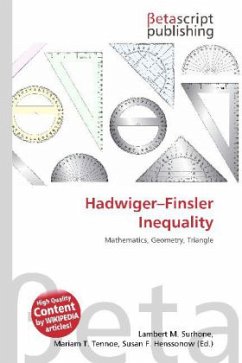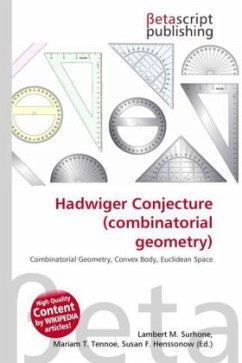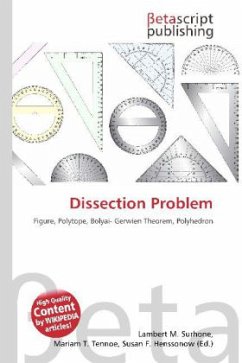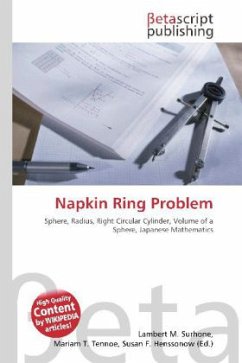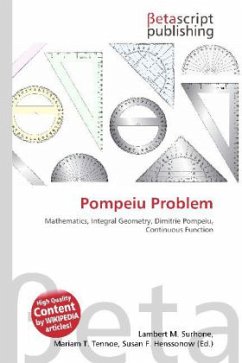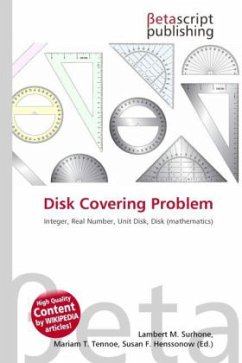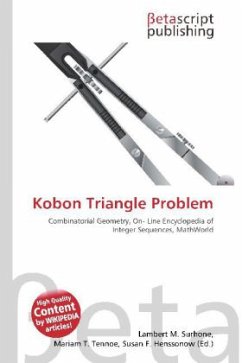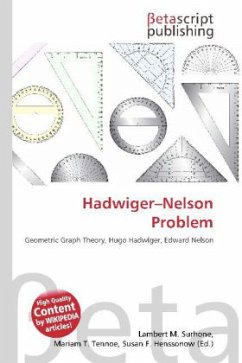
Hadwiger Nelson Problem
Versandkostenfrei!
Versandfertig in 6-10 Tagen
23,99 €
inkl. MwSt.

PAYBACK Punkte
12 °P sammeln!
In geometric graph theory, the Hadwiger Nelson problem, named after Hugo Hadwiger and Edward Nelson, asks for the minimum number of colors required to color the plane such that no two points at distance one from each other have the same color. The answer is unknown, but has been narrowed down to one of the numbers 4, 5, 6 or 7. The actual value may actually depend on the choice of axioms for set theory (Shelah & Soifer 2003). The question can be phrased in graph theoretic terms as follows. Let G be the unit distance graph of the plane: an infinite graph with all points of the plane as vertices...
In geometric graph theory, the Hadwiger Nelson problem, named after Hugo Hadwiger and Edward Nelson, asks for the minimum number of colors required to color the plane such that no two points at distance one from each other have the same color. The answer is unknown, but has been narrowed down to one of the numbers 4, 5, 6 or 7. The actual value may actually depend on the choice of axioms for set theory (Shelah & Soifer 2003). The question can be phrased in graph theoretic terms as follows. Let G be the unit distance graph of the plane: an infinite graph with all points of the plane as vertices and with an edge between two vertices if and only if there is unit distance between the two points. Then the Hadwiger Nelson problem is to find the chromatic number of G. As a consequence, the problem is often called "finding the chromatic number of the plane". By the de Bruijn Erd s theorem, a result of de Bruijn & Erd s (1951), the problem is equivalent (under the assumption of the axiom of choice) to that of finding the largest possible chromatic number of a finite unit distance graph.



